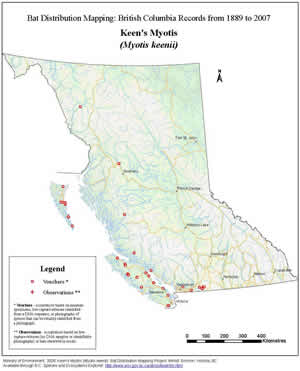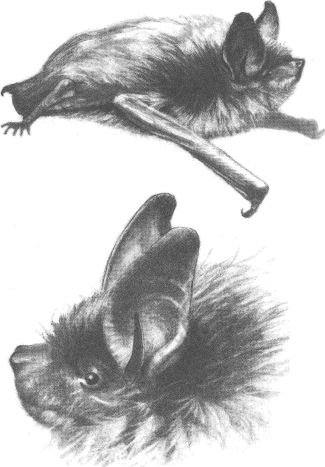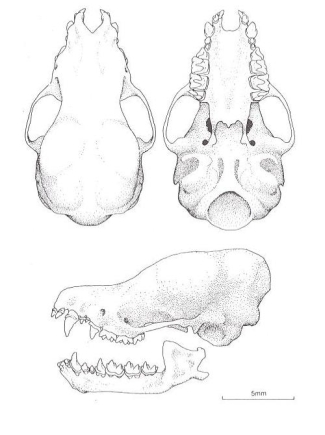Mating presumably occurs in autumn. The scanty breeding data consist of a nursing female and juveniles observed on Hot Spring Island in late July; this suggests that the young are born in June or early July.
|
Food habits have not been investigated, but the diet probably consists of moths and other insects. On Hot Spring Island, Keen's Long-eared Myotis forages over hot spring pools and clearings above salal. Individuals marked with light tags were observed to fly into the tree canopy, but their activity could not be monitored.
|
What little is known about the biology of this bat is derived from incidental observations, information recorded on museum specimens and some research conducted on Hot Spring Island in the Queen Charlotte Islands. It likely uses tree cavities, rock crevices and small caves as roosting sites. There are several records from the vicinity of hot springs and the only known colony occurs on Hot Spring Island. Most of the natural history data for this species comes from the Hot Spring Island population. However, given the unusual ecological situation, it is not clear if this information is applicable to other populations. On Hot Spring a colony of about 70 Keen's Long-eared Myotis, in association with a colony of the Little Brown Myotis, roosts under rocks that are heated by a natural hot spring. Temperatures at the roost entrance in summer range from 22°C to 27°C, whereas the ambient temperature varies from 11°C to 18°C. Because of a warm spring, the roost is quite humid. The roost is situated below the high tide line and it is often submerged for several hours at high tide. During these periods of high tides the roost is abandoned.
There are no winter records, and it is unknown if this species hibernates in coastal regions.
|
|


